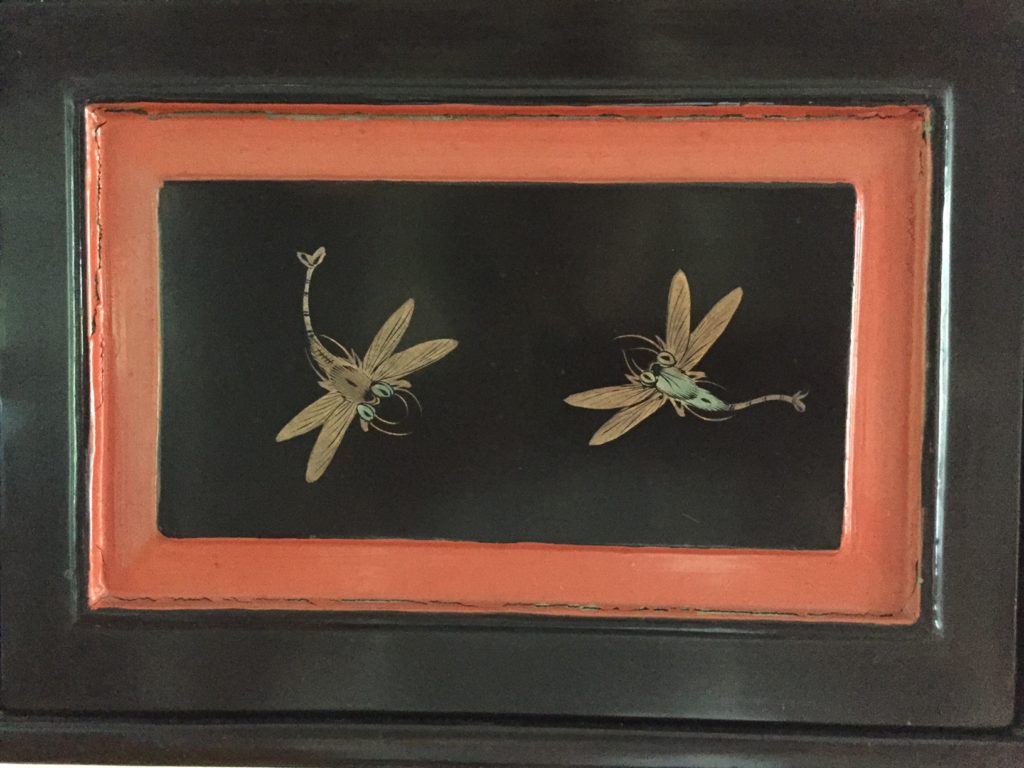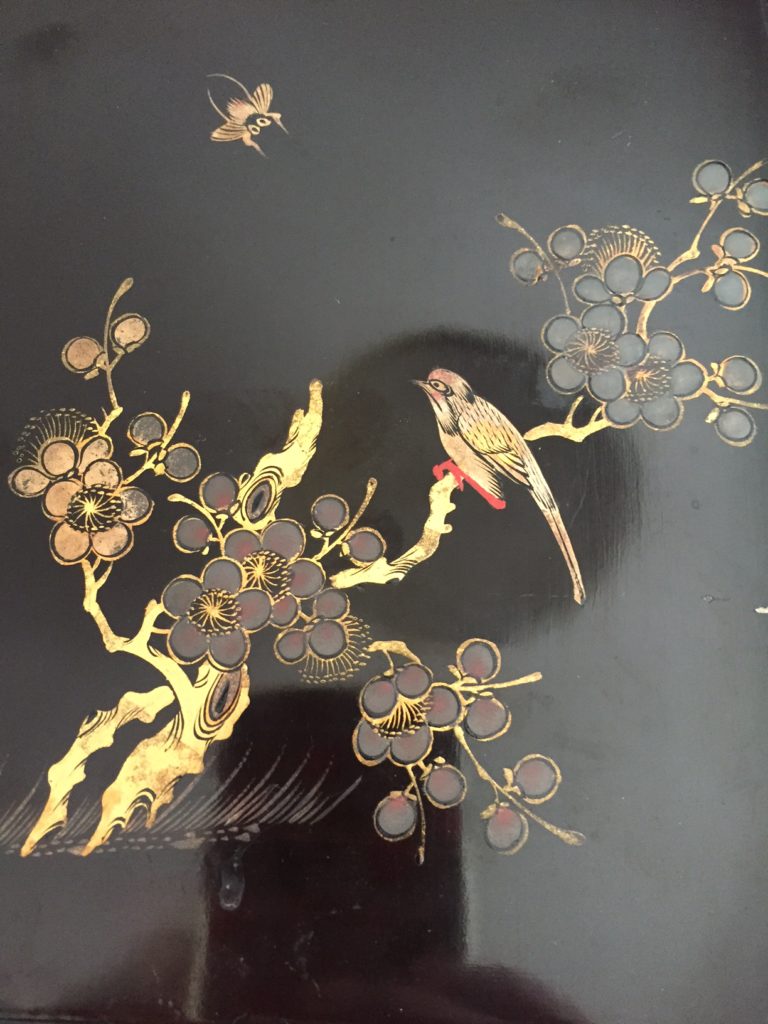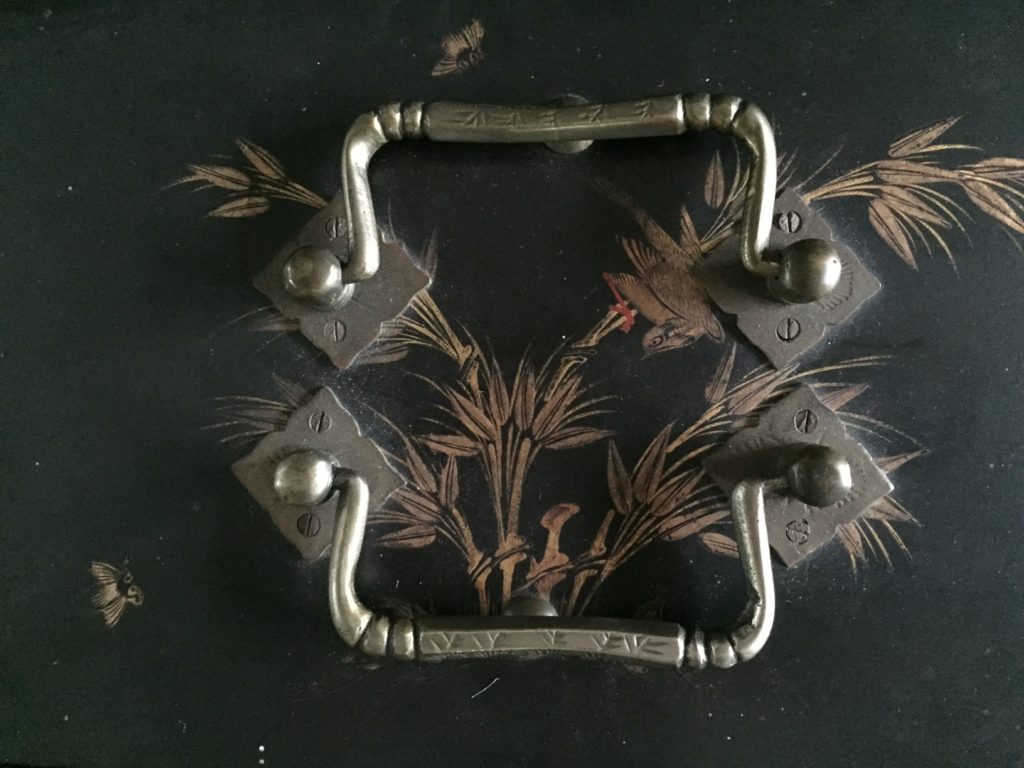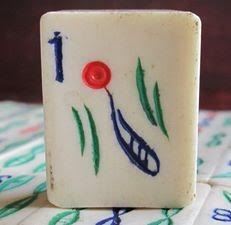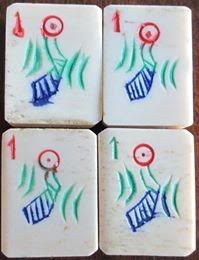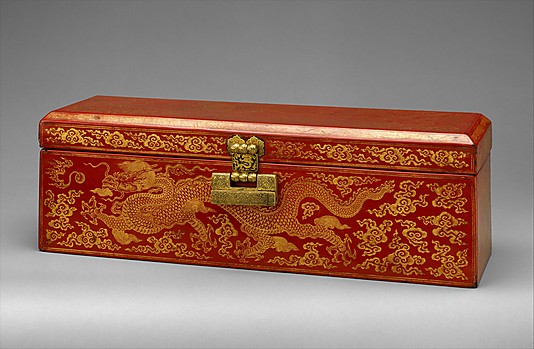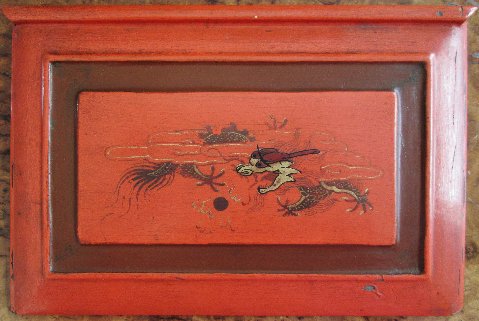From time to time I get to see beautiful and special boxes that house Mahjong sets. I want to share this one with you, and on this last day of May it seems especially fitting.
A reader sent me photos of this lacquer box, featuring the Mayfly, although at first I thought an artist took a lot of liberties with a butterfly. The Mayfly has special meaning to the Chinese and can symbolize (from primaltrek.com) strength, peace, harmony, purity, good luck, prosperity, childhood, living for the moment, joy and transparency. Quite a lot for one little insect! Mayflies actually have a very interesting life cycle, and you can read more about them by visiting a website I have linked at the end of the blog.
This is the side of the box, with a charming bird looking at a cicada from the branch of a plum tree. From Primaltrek: The cicada is a symbol of rebirth and immortality because after surviving underground for a long period of time it emerges and flies into the sky. Note the five blossoms on the flower, the give-away for a plum blossom in Chinese art. The plum blossom is also one of the four plants associated with the seasons. What is fascinating about Chinese art is that everything has to be put into context. Although the plum blossom is usually associated with winter, because of its pairing with the cicada it is associated with spring, and rebirth.
The box of the box features a crane (symbol of longevity) standing under a pine tree (yes, another symbol of longevity!) And that darling cicada is making himself known again.
Even the top of the box is decorated in the theme, with bees buzzing. The bird is perched in bamboo. Bamboo is a symbol of strength as well as ideals of the Confucian scholar, because both are upright, strong, and resilient (primaltrek.com). Bamboo is also the plant associated with summer. Even the handles of the box are embellished with what looks like bamboo leaves, and they may be made from a semi-precious metal known as Paktung.
What a Mahjong Treasure!
It is my feeling that some of the greatest artists in China in the 1920s, the time when Mahjong was the 6th biggest export from China, went to work in the Mahjong business. This box certainly would be a big argument for that being true.
There is a long history of the Mayfly being part of Mahjong, starring as One Bams. You can click here to see reader Tony Watson's write-up for this blog.
Katherine Hartman sent us some lovely photos of Mayfly One Bams:
Michael Stanwick's website also features other examples of Mayfly One Bams.
For more information about the Mayfly you can go here:
Just found out there will be an article about the mayfly in the next Mahjong Collector Magazine. If you are not already a subscriber and you want to be, here's the email address you need: subscriptions@mahjongcollector.com

